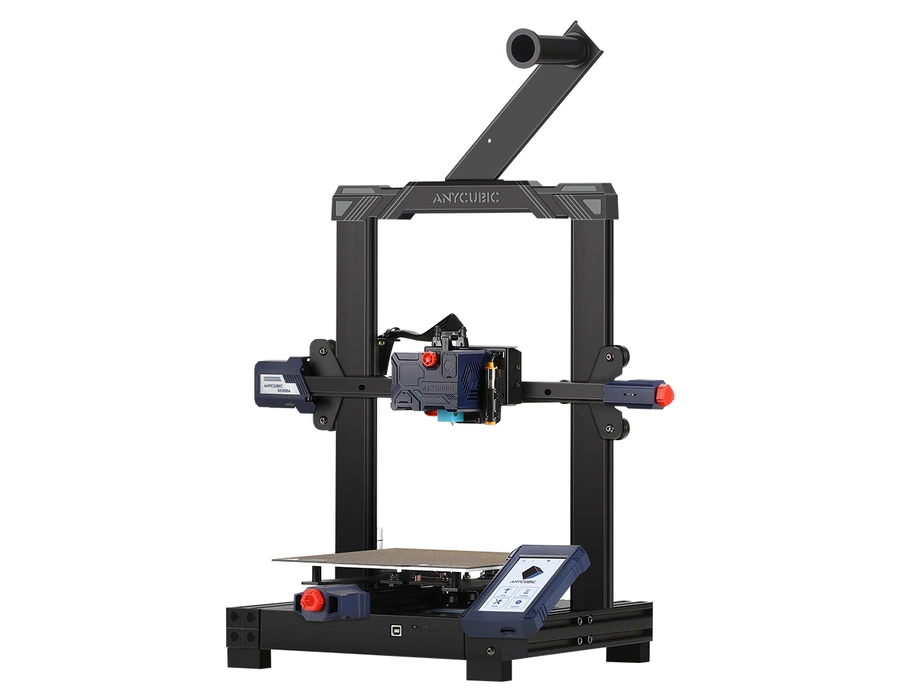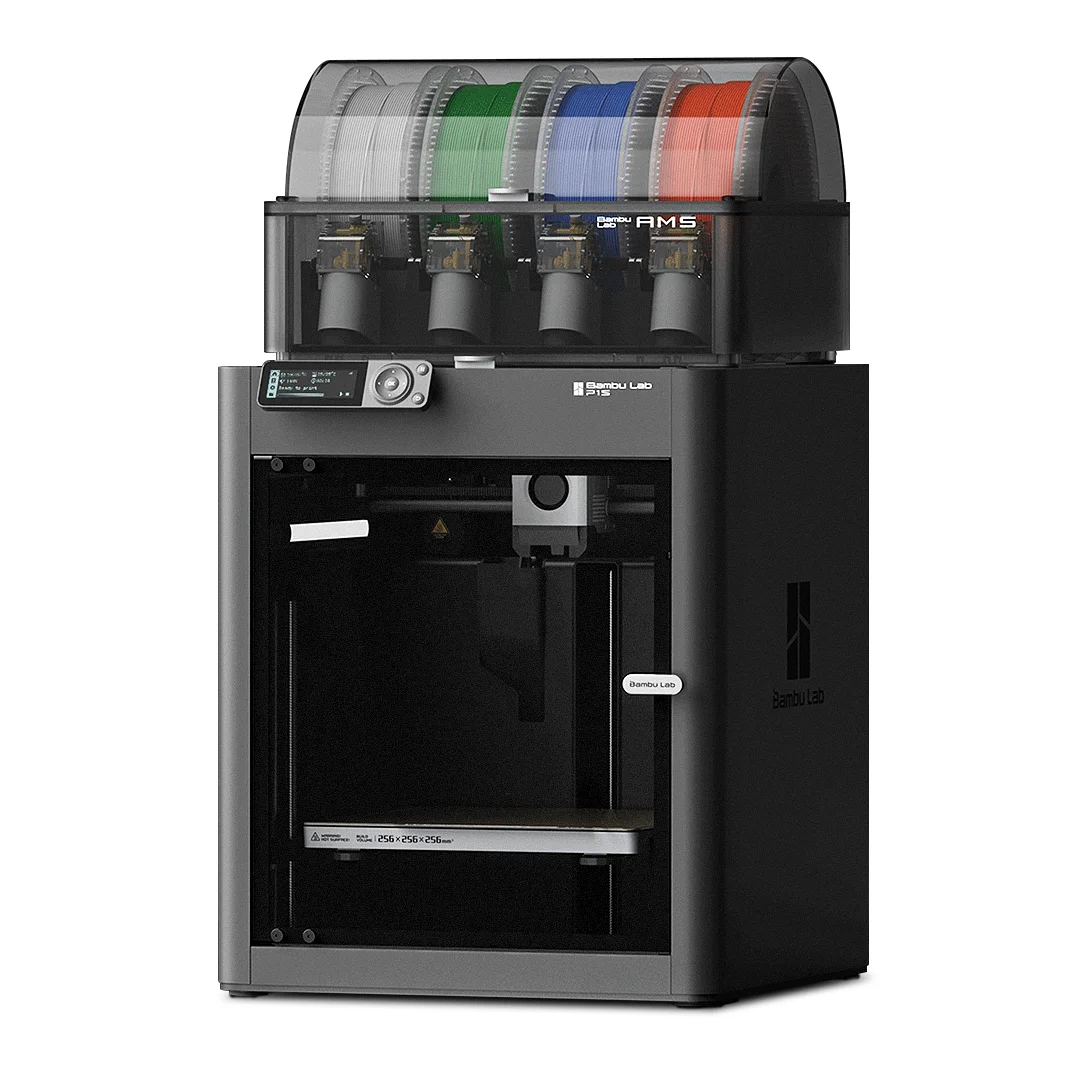Compare Kobra vs P1S
Comparison between the best 3D printers
Choose the best 3D printer at the best price. The cheapest 3D printers are here.
Buy a 3D printer here with 3D Fila.
 |
 |
|
| Model | Kobra |
P1S[BUY P1S] |
| Printing Material | Filament | Filament |
| Buy Filament for Anycubic Kobra | Buy Filament forBambu Lab P1S | |
| Estimated price | $259,00 | $949,00 |
| Manufacturer | Anycubic | Bambu Lab |
| Release Year | 2022 | 2023 |
| Print Volume [mm] | 220x220x250 | 256x256x256 |
| Printer Size [mm] | 486x430x486 | 389x389x458 |
| Weight [kg] | 7 | 12,95 |
| Power Loss Recovery | YES | YES |
| Enclosed printer | NO | YES |
| Bed Leveling | Automatic | Automatic |
| Filament End Sensor | NO | YES |
| Bed type | Heated | Heated |
| Power supply system | Direct Drive | Direct Drive |
| Standard nozzle | 0,4 | 0,4 |
| Maximum Nozzle Temperature [°C] | 260 | 300 |
| Maximum Bed Temperature [°C] | 110 | 100 |
| Maximum printing speed [mm/s] | 180 | 500 |
| Filament holder | YES | YES |
| Camera for supervision | NO | NO |
| Recommended filaments | PLA, PETG, Tritan, Flex, ABS | PLA, PETG, TPU, PVA, PA, PA-CF, Nylon, PC |
| Recommended slicers | Cura, Simplify, Slic3r, IdeaMaker | Bambu Studio, Super Slicer, Cura, Prusa Slicer, Orca |
| Maximum Resolution [mm] | 0,1 | 0,1 |
| Processor | Quad ARM A7 1.2 GHz | |
| Display | Display touchscreen 4,3'' | Touchscreen 5'' |
| Power Supply | 110/220V / 400W | 350 W |
| Connectivity | SD / USB | Wifi, Bambu bus, Cartão SD |
| Operating systems | Windows, Mac, Linux | Windows, Linux, Macbook |
| Date of registration in the system | 2022-11-09 | 2024-04-11 |
| Release date | 2022 | 2023 |
| Extra features | The Anycubic Kobra features automatic bed leveling and a direct extruder for easy filament handling. The print bed is coated with PEI on a flexible steel plate, improving adhesion and making prints easier to remove. The printer features sensorless homing and is designed to be easily disassembled for easy maintenance and customization. | The Bambu Lab P1S stands out for its out-of-the-box practicality, eliminating the need for manual adjustments with automatic calibrations such as bed leveling and vibration compensation. It features multicolor printing capability through the AMS system, allowing up to 16 colors when connecting four AMS units. With an advanced control algorithm, the P1S offers fast printing speeds without sacrificing quality. Equipped with modern features such as filament end sensor, semi-automatic belt tension, direct extruder, welded frame and all-metal hotend, along with a fully enclosed chamber, the P1S promotes a superior printing experience, supporting a wide range of materials. |
| Support for multiple colors and materials (AMS and CFS) | NO | YES |
Notes * |
||
| Cost-benefit | 7 / 10 | 7 / 10 |
| Hardware | 2.1 / 10 | 6.4 / 10 |
| Tela | . | . |
| Print volume | 3 / 10 | 4 / 10 |
| Performance | 1 / 10 | 4 / 10 |
| [BUY P1S] |
Conclusion |
| In comparing the Anycubic Kobra and the Bambu Lab P1S, it is evident that both printers cater to different segments of the 3D printing market, reflecting distinct advantages that resonate with varying user needs. The Anycubic Kobra, with its significantly lower price point, provides an attractive entry-level option for enthusiasts or those new to 3D printing. It features essential capabilities such as automatic bed leveling and a heated print bed, making it suitable for various filaments like PLA and PETG. However, its print volume and maximum speed are modest compared to the competition, and it lacks some advanced features like a filament end sensor and an enclosed build area. On the other hand, the Bambu Lab P1S represents a premium choice with advanced features that justify its higher price. It not only offers a larger print volume and faster printing speeds but also includes essential enhancements like an enclosure, a filament end sensor, and multiple color printing capabilities through the AMS system—appealing to users looking for professional-grade results and efficiency. In terms of overall value, the Kobra scores well for cost-efficiency, but the P1S outshines it in performance and functionality, making it a better investment for serious hobbyists and professionals. Ultimately, the choice between these two printers will depend on individual requirements, budget considerations, and the intended application of the 3D printing projects. |

